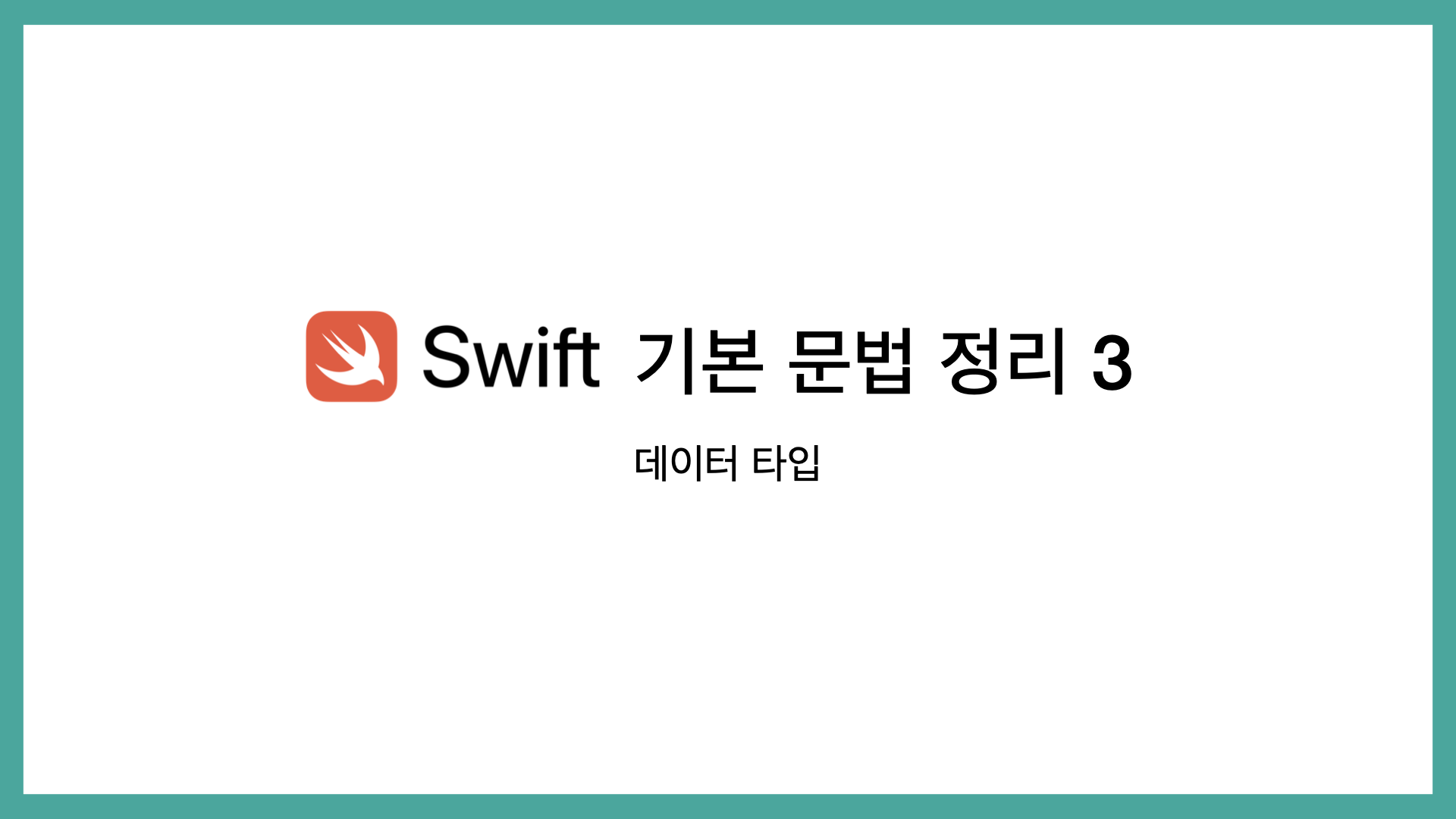
기본형
📌 Bool
참은 true 으로, 거짓은 false로 표현
📌 정수 Int, UInt
실행 환경에 따라 값의 범위 변경
- 64비트 환경이면 Int는 Int64로 설정되어 64비트(8bytes) 정수형 타입
UInt 는 양수만 할당 가능
📌 부동소수 Float, Double
Float 는 32비트 부동소수형이고, Double 은 64비트 부동소수형이다.
📌 문자 관련 Character, String
둘 다 유니코드 를 사용하며, 큰 따옴표(" ") 를 사용
Any, AnyObject, nil
📌 Any
함수 타입을 제외한 클래스 포함 Swift의 모든 타입 을 지칭하는 키워드
is로 어떤 타입을 가지고 있는지 확인 후,as로 형변환하여 사용 가능
class Human {
var weight: Double
var tall: Double
init(_ weight: Double, _ tall: Double){
self.weight = weight
self.tall = tall
}
}
var any: Any = Human(13,12)
if any is Human {
if let instance: Human = any as? Human {
print("tall = \(instance)")
}
}📌 AnyObject
모든 클래스를 지칭하는 프로토콜
📌 nil
null 과 같이 없음 을 의미하는 키워드
Optional타입의 변수나 상수에만 할당이 가능
컬렉션
📌 Array
순서(인덱스)가 있는 리스트 컬렉션
1. Array 생성
[Int]가 Array<Int>와 동일하게 사용
var integers: Array<Int> = Array<Int>()
// var integers: [Int] = Array<Int>()
// var integers: Array<Int> = [Int]()
// var integers: [Int] = [Int]()
// var integers: [Int] = []2. 값 추가
integers.append(10)3. 값 제거
integers.remove(at: 0)
integers.removeLast()
integers.removeAll()4. 인덱스 i 의 값 조회
integers[i]5. Array 길이
integers.count📌 Dictionary
key와 value로 구성된 컬렉션
1. Dictionary 생성
[String: Any]가 Dictionary<String, Any>와 동일하게 사용
var anyDict: Dictionary<String, Any> = Dictionary<String, Any>()
// var anyDict: [String: Any] = [String: Any]()2. 값 추가
anyDict["someKey"] = "value"3. 값 제거
anyDict.removeKey(forKey: "someKey")
anyDict["someKey"] = nil📌 Set
순서가 없고 중복된 값이 없는 컬렉션
1. Set 생성
var integerSet: Set<Int> = Set<Int>()2. 값 추가
integerSet.insert(10)3. 값 제거
integerSet.remove(value)
integerSet.removeFirst()4. Set 길이
integerSet.count5. 집합 관련 함수
-
합집합
setA.union(setB) -
교집합
setA.intersection(setB) -
차집합
setA.substracting(setB)
🧷 참고한 강의 : "iOS 프로그래밍을 위한 스위프트 기초"
